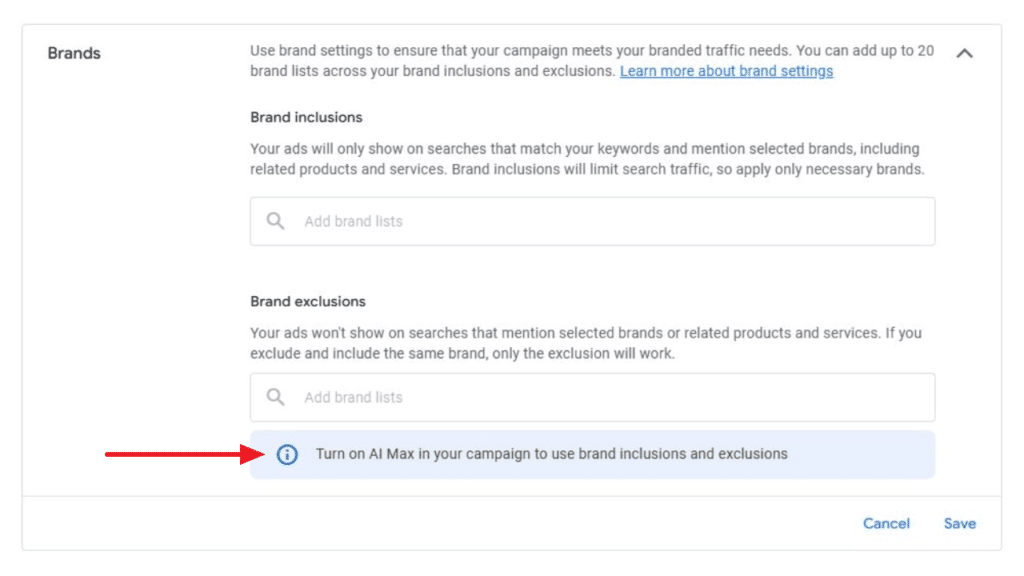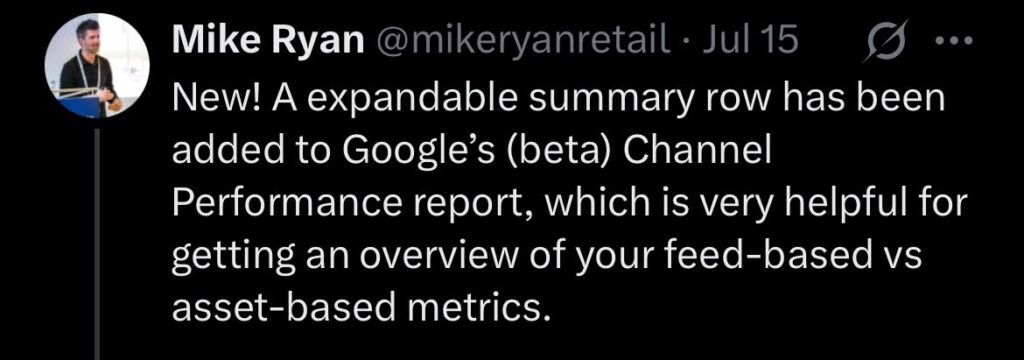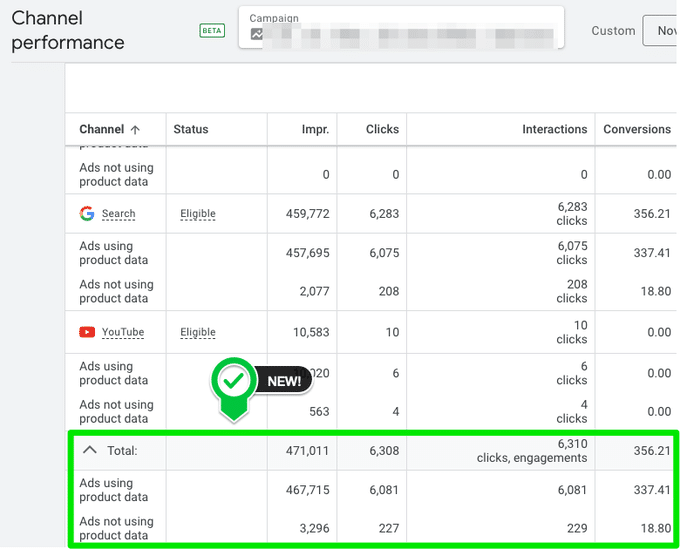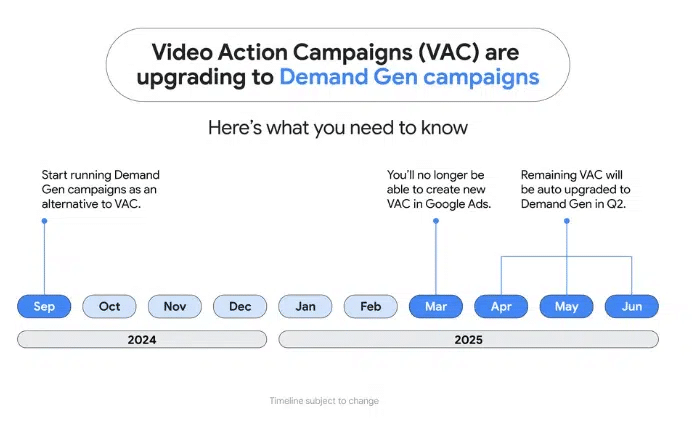Google Ads News for July 2025
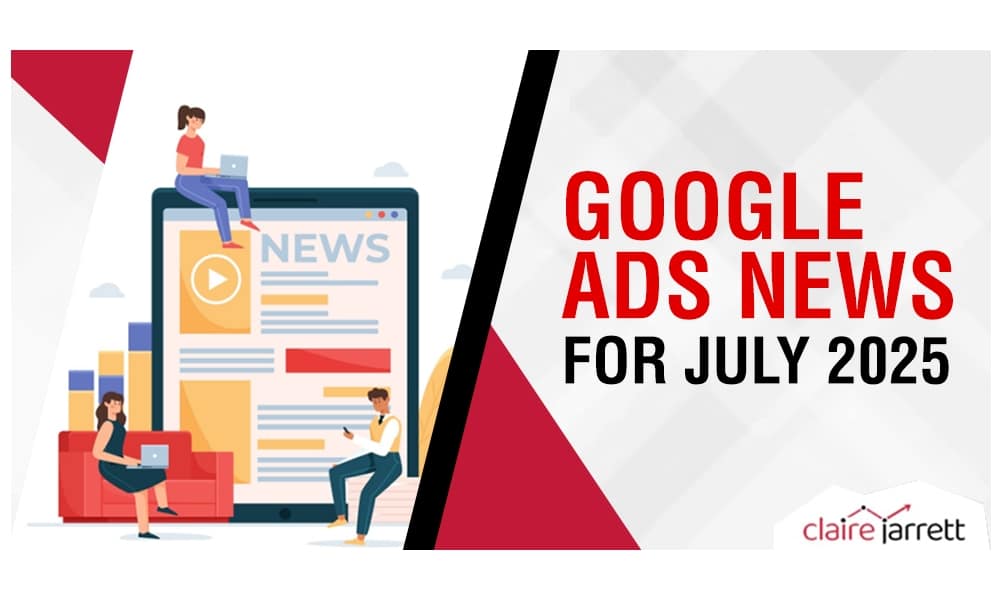
Last Updated on: 24th November 2025, 12:47 pm
Hi there, and welcome to my July 2025 Google Ads roundup!
This month, we have the sunsetting of Shared Ads, new reporting transparency in AI Max, a shift from Video Campaigns to Demand Gen, and some API changes that could stunt your campaigns if you’re not paying attention.
Plus, loads of little time-savers that can make your life easier.
Let’s dive in!
AI Max in Google Ads Gets Slightly Less Mysterious: New Report Links Search Terms to Landing Pages
This one was first spotted by Jerome Fleck and shared via PPC Newsfeed. If AI Max has ever sent traffic to a random product page and left you wondering why on earth that happened… good news! Google’s finally letting you take a peek.
What’s New
There’s now a new segment in your Search Terms report called Search terms and landing pages from AI Max. It shows, in one place, the exact queries users typed in and the landing pages Google’s automation matched them to.
That might sound basic, but it’s the first time Google has made this connection visible for AI Max. Before this, you’d have to manually cross-reference two reports – and even then, you were mostly guessing.
Why AI Max Visibility Matters
One of the biggest complaints I hear from advertisers testing AI Max is, “I have no idea where this traffic is going.” And for good reason.
When you don’t know what search terms are triggering which pages, you’re trusting luck.
This new view doesn’t fix everything, but it finally gives us visibility into how the algorithm is connecting intent to your site content. That means you can now:
- Spot poor matches and fix them with better site structure or exclusions
- Validate that high-converting queries are landing in the right place
- Stop wasting money on irrelevant pairings that AI swore were a good fit
What to Do Next
- Open your Search Terms report and select Search terms and landing pages from AI Max
- Sort by conversions or cost to see which pairings are helping (or hurting)
- Use the insights to improve your landing pages, site metadata, or campaign exclusions
- If you’re testing AI Max, this is now a must-watch report, so bookmark it
It’s not full transparency yet, but it’s a big step. And if you’ve been holding off on AI Max because of its black-box nature, this might make it slightly less risky to experiment with.
Good Google Ads News for eCommerce: A Summary Row That Could Save You a Lot of Clicking
First spotted by Mike Ryan (Head of eCommerce at Smarter eCommerce) on X, this quiet beta could turn out to be a massive time-saver. Google hasn’t said a word officially, but it’s now testing a new expandable summary row in the Channel Performance report.
What’s New?
There’s now a caret icon (the arrow pointing upwards) next to the summary row in your Channel Performance report.
Click it, and you’ll get a side-by-side breakdown of feed-based vs. asset-based performance, right inside the table.
So instead of jumping between tabs or reports to see how your product feeds compare to your creative assets, now it’s all in one click.
This matters most in Performance Max and other hybrid campaigns in eCommerce, where you’re mixing catalogue feeds with static or video assets.
What to Do Next
- Check your reports. If you’re in the beta, you’ll see the caret in the Channel Performance report. Try expanding it.
- Start benchmarking. If you use both assets and feeds, this is your chance to understand which one’s really carrying conversions.
- Give feedback. Since this is a silent beta, any feedback now could shape the final version or speed up rollout.
It’s rare to get a helpful UI improvement from Google without them packaging it in three layers of padding. If you’re managing hybrid campaigns, this should be your new default view.
Google Just Shifted How Brand Assets Work in PMax. API Users, Take Note!
If you’re managing PMax campaigns through the UI, your brand logos and business names are now controlled by new campaign-level brand guidelines. And if you’re using the API, you’re next.
What’s New?
Google has finished rolling out brand guidelines for all PMax campaigns created via the interface. These guidelines move brand assets (logos, business names) out of Asset Groups and into the CampaignAsset level.
If you’re still looking for them under AssetGroupAsset, you’re already behind.
Google’s brand_guidelines_enabled flag is the signal to watch. If it’s true, you’ll need to work with the new structure. And yes, this is being baked into the next API release (v21), where guidelines will be enabled by default.
What API Users Should Do Now
- Check the brand_guidelines_enabled field for every PMax campaign you touch.
- If true, retrieve brand assets via CampaignAsset, not AssetGroupAsset.
- Still support the old method for legacy campaigns, but don’t rely on it.
- Prepare for v21, where this becomes the default. In v20 and earlier, it’s off unless you manually enable it.
You can also use CampaignService.EnablePMaxBrandGuidelines to manually enable guidelines now, and set auto_populate_brand_assets = true to automatically apply your top-performing brand logos and names.
One More Thing
Once brand guidelines are enabled for a campaign, you can’t disable them. So make sure you’re ready before switching them on.
Automatic migration is already underway for accounts using the same brand assets across asset groups. That process wraps up by October 30. If your setup is more custom, do it manually.
Don’t wait.
Big Google Ads News: Shared Ads Are Retired. Prepare for Asset-First Future!
Google is officially deprecating shared ads, AKA reusable creatives you could deploy across multiple ad groups. Starting with API v22, they’re gone for good.
Key Dates for Shared Ads Sunsetting
- October 15, 2025. You won’t be able to create new shared ads via the API.
- Q1 2026. Existing shared ads will stop serving. Google will auto-migrate them to ad group-level formats.
In Q1 2026, Google will keep the shared ad in the ad group with the lowest ID, copy the ad to all other relevant groups, and regenerate assets (if applicable), which could change how they serve. Translation: your ads might behave differently, and you won’t know why.
Why This Matters
If you manage campaigns at scale through the API, this is a structural shift. You can no longer share a single ad across multiple ad groups, which means more ad objects, more manual work, and more planning around performance continuity.
Google’s moving everyone to asset-based formats, like Responsive Search Ads and Performance Max. That means dynamic, per-ad-group creative assembly.
Again, if you don’t adapt, Google will do it for you. And when that happens, you lose control over ad delivery and performance consistency.
How to Adapt to Shared Ads Sunsetting
Audit Your Codebase
Look for any logic that:
- Reuses the same ad object across ad groups
- Uses AdGroupAdService to point to a shared ad resource
Refactor Your Workflows
- Create a new ad for each ad group, even if the content is identical
- Use Responsive Search Ads going forward
Prepare for Reporting Disruptions
- Every new ad gets a new ID, so you lose historical performance linkage
- Export old performance data now for long-term comparison
Manual migration always beats automatic chaos. Don’t wait for Q1 to find out your top performer just vanished.
Video Action Campaigns Are Out, and Demand Gen Is In
Google’s now automatically upgrading all remaining Video Action Campaigns to Demand Gen. You don’t need to click a thing (but I recommend that you do, so you stay in control of what’s served when).
The switch started in April, when new VAC creation was shut off. Now in July, every last VAC will be converted. Google’s goal is to push advertisers into a more visual, discovery-driven ad experience that spans YouTube, Discover, and Gmail.
Why This Google Ads News Matters
Demand Gen reflects a deeper shift in user behaviour: people aren’t waiting to “search” when they want something.
They’re browsing, watching, and skimming across channels. If your ads don’t look like they belong in that feed, they’re ignored.
Google claims Demand Gen can drive 20% more conversions at the same CPA. Whether or not you believe the number, the direction of travel is clear: multi-format, omnichannel, visual-first.
What Demand Gen Does Differently
- Video + image assets in a single campaign
- Ads appear across YouTube, Google Discover, and Gmail
- Optimised for discovery-based intent, not just search
What you’re doing is intercepting users mid-scroll with visuals that blend in and then stand out.
What to Do Next
- Update your creative bank. Don’t rely on video alone. Combine short-form clips with high-quality static visuals that make sense in a swipe-heavy environment.
- Review performance differently. The KPIs for Demand Gen aren’t just CTR and CPA. You’re looking at view-through conversions, engagement rate, and lift in brand interest.
- Rethink your messaging. You’re interrupting, not responding. Focus on hooks, benefits, and visual impact.
- Test early, because this format spans multiple surfaces, test creatives across devices and placements. What works on YouTube Shorts might flop on Discover.
In simpler terms, Google is chasing TikTok-style behaviour, and doing it inside its own ecosystem.
Don’t let Google upgrade your campaigns while your strategy stays stuck in 2022. Learn the ins and outs of Demand Gen ads in my guide.
Where All of This Is Headed (and What to Do About It)
This month’s updates feel like Google’s rearranging the furniture. We’re giving up on some of the old comforts like shared ads, recycled assets, the illusion of total control… but at the same time, we’re gaining cleaner workflows, tighter brand control, and better visibility into how automation operates.
As you’ve probably noticed, Google’s building for scale, but you still need to be the adult in the room.
So don’t treat these like “Great, thanks for the heads-up, Claire,” and go on about your day. Treat them like your next edge.
Especially if your competitors are still just trusting the defaults.
Need help implementing the changes and adjusting your ad strategy to the new rules? Get in touch with me, or brush up on your fundamentals with my best-selling Google Ads book.
See you next month!

